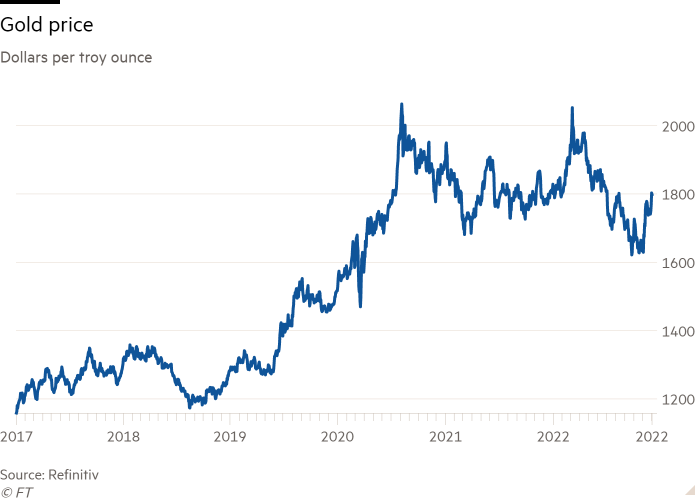World’s largest gold ETF to use non-UK vaults for the first time

Simply sign up to the Exchange traded funds myFT Digest -- delivered directly to your inbox.
Latest news on ETFs
Visit our ETF Hub to find out more and to explore our in-depth data and comparison tools
The world’s largest gold exchange traded fund is to store some of its inventory outside London for the first time in a move aimed at facilitating further expansion.
The $52.5bn SPDR Gold Trust (GLD) has held all its bullion in HSBC’s London vaults since its inception as the first physically backed gold ETF in 2004.
However, it is now adding a second custodian, JPMorgan, utilising the US bank’s vaults in Zurich and New York, as well as in London. It is believed to be the first time a gold ETF has had multiple custodians.
“[GLD] was a market innovation in 2004, which put us in a position of being a market leader. It’s now almost 20 years old and we have found a new way to innovate with it,” said Joe Cavatoni, principal executive officer of World Gold Trust Services, the sponsor of the fund.
GLD is a major player in the bullion market, accounting for more than 25 per cent of all assets held by gold ETFs. At the peak of the gold rally in July 2020, when prices rocketed to record highs above $2,000 a troy ounce, the fund’s holdings topped 1,200 tonnes, making it a bigger owner than the central banks of either Japan or India.
It still holds more than 900 tonnes, despite outflows from gold funds as the price has softened to $1,800 per troy ounce. JPMorgan and HSBC are the world’s leading bullion banks.

Cavatoni said no client has asked for their assets to be moved out of London or away from HSBC and there were no issues with capacity at HSBC’s vault.
He said the decision to bring JPMorgan on board was not driven by financial considerations. There is no cost impact to investors, with custody fees embedded in the 40 basis point annual management fee.
However, Cavatoni said, from a “risk management perspective we can see some benefits” from increasing the diversification of storage sites.
GLD’s bullion is insured by HSBC, but the bank has a standard force majeure clause in place which means it is not responsible for loss caused by terrorist attacks, wars or acts of God.
The decision to bring a second custodian on board “is not about something necessarily happening to the gold. The insurance that the industry holds at a vault level is based on what they feel is adequate to cover the likelihood of an event. It’s a factor, but it’s not the driving factor,” Cavatoni added.
“It gives us the ability to grow, to talk to our clients and ensure that we do have in place some diversification away from just a single provider,” he said.
“It’s about the fact that we have a vested interest from another vault and another custodian to service the largest gold ETF worldwide. We are excited about this innovation.”
HSBC said it was “pleased to continue acting as a custodian for the World Gold Council’s SPDR Gold Trust”.
JPMorgan, alongside HSBC and several other banks, already acts as an authorised participant for GLD, creating and redeeming blocks of shares in exchange for gold bullion.
This creation and redemption process will continue to operate out of London but WGTS, an arm of the World Gold Council, will “have the opportunity, if we choose, to move some of the gold at our discretion”, Cavatoni said.
This will not, though, involve physically trucking gold bars from one location to another, he added. Instead, the process will be based on book transfers of existing holdings of bullion, meaning GLD will end up owning different gold bars.

Click here to visit the ETF Hub
Comments